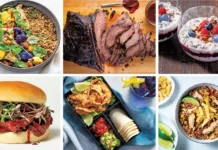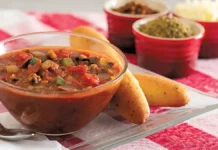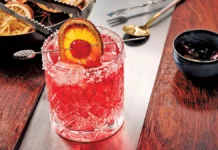In 1965, a woman from Phoenix walked into the New York City office of the New York State Restaurant Association to discuss the idea of no-smoking sections in restaurants.
Her husband had passed away due to smoking, and she was starting a movement—not to ban smoking, but control it in public places such as restaurants. As most of you know, it took 35 years for this to happen, but happen it did!
It was the most dramatic intrusion by government to prohibit the actions of restaurant patrons. Prohibition of alcohol was the first, but proved to be a failure and that law was repealed in 1933. The no-smoking section in a restaurant was the first health-related issue, which dealt with patrons’ choices. About 10 years later, groups who were soon labeled as “food police” started lobbying the federal government to require food manufacturers to list nutrition facts on many of their packaged products, which they eventually did. This, in my mind, did more to not only educate the general public about nutrition when eating at home, but when eating out as well.
It became a primer of nutritional facts and terms such as saturated fat, trans fat, polyunsaturated fat, cholesterol, and sodium, to name a few. These labels also listed the calories per serving. Little did a segment of the foodservice industry, the quick service restaurant, realize that it too would soon be faced with this same burden.
The recent regulations issued by the Food and Drug Administration mandate that restaurant companies with 20 or more establishments, movie theaters, and pizza places in all 50 states will have to post calories on their menus. These regulations are the most far-reaching mandates ever imposed by the federal government because they include certain foods in supermarkets, vending machines, amusement parks, and alcoholic beverages, but not mixed drinks at bars.
As I pointed out in a recent article dealing with mixed drinks, there are as many ways of preparing them as there are ways of making pizzas. It is my understanding that the pizza industry has already advised the FDA that it will be impossible for them to comply with the regulations as written.
While this was occurring, the industry was taking its own initiative in dealing with the public’s request for more healthful offerings. Most successful companies find that they must respond to guests’ requests, or lose the guests. While the list might not satisfy the food police, all of the items listed were due to consumer requests: decaffeinated coffee, light beer, and menu items that have the approval of the American Heart Association.
Some quick service chains are voluntarily removing soda options from their kids’ menu. Veggie burgers are now offered as an option on sandwich listings. Most restaurants have or are attempting to reduce sodium. Fat-free items appear on many menus. Special requests are also receiving attention.
The two million people in America who suffer from celiac disease are finding more locations offering gluten-free items on their menu. The New York Times stated in a recent article that many more have what is known as non-celiac gluten sensitivity, and still others follow a gluten-free diet because it tends to help control weight gain.
In order to offer gluten-free food, the cooking utensils must be free of gluten. Some manufacturers have full lines of gluten-free cookware. You must make sure that your prep table is likewise gluten free. Simply put, it means, for many operators, investing in special equipment to become gluten free.
The demand has grown to a point that food manufacturers are also producing gluten-free products for the foodservice industry. They too must respond to their customers, which are restaurants.
As an example, the pizza segment is now offering gluten-free pizzas. Pizza Hut recently announced that a 10-inch gluten-free crust is now available. It will be limited to two choices: 10-inch cheese-only and pepperoni pizzas. The dough is being supplied by Udi’s, a gluten-free baking company owned by Boulder Brands, according to The New York Times.
One of the concerns of the culinary community is the possibility of prohibiting the use of certain ingredients, for example, salt. Many have reduced its usage, but eliminating it entirely could dramatically change recipes that are signature dishes of many chefs and establishments.
I think it fair to say that the industry has evolved into a highly regulated one. There is the health department, labor, consumer affairs, the state liquor authority, and building and fire departments. Most of them require some kind of signage, which, if not properly posted, could result in a fine. The foodservice industry truly is operating in an increasing “regulatory revolving door” environment.
Most of those in this industry are mindful of their responsibilities and make every effort to serve wholesome, healthy foods in clean surroundings. We have and will continue to respond to our guests’ requests and needs.
While it might sound elementary, you must respond to change if you plan to stay in business.























